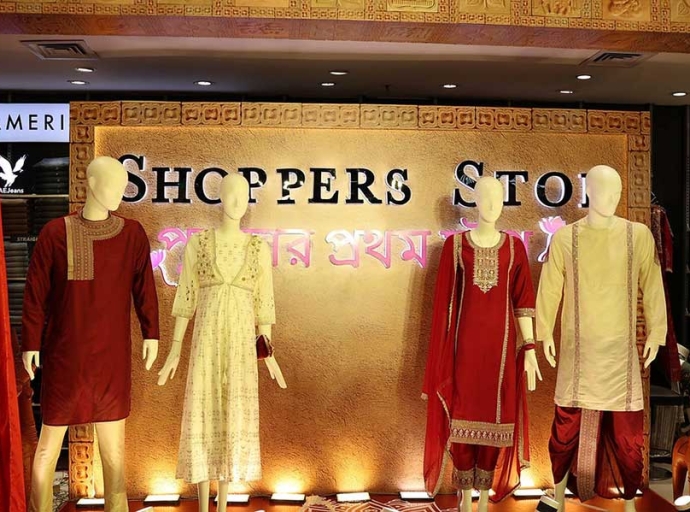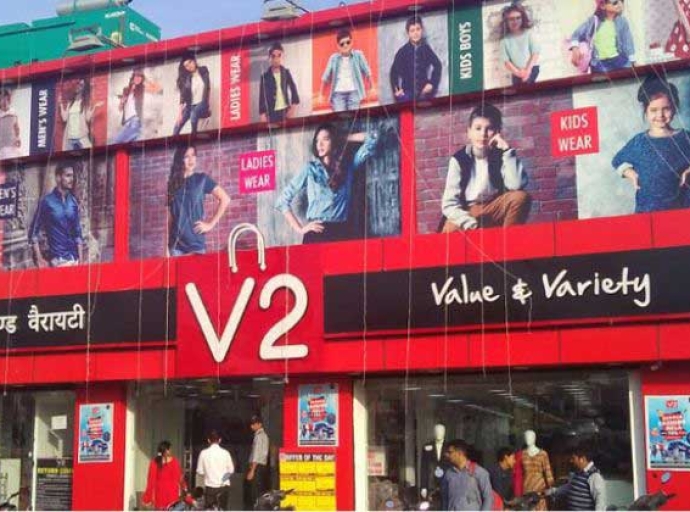20 December 2022, Mumbai
The complex landscape of conflicting sustainability reporting frameworks and standards that direct businesses and investors in ESG disclosure may soon become more apparent given its rising consciousness and regulatory overhang.
According to recent estimates from McKinsey & Company, "sustainable goals is an all-encompassing organizational problem and frequently involves transformation for both the product portfolio and therefore, organization/companies must prioritize supply chain ESG concerns.
Piece by piece
The textile sector, which ranks among the most polluting in the world, must look into sustainable practices to reduce resource consumption and pollution, enhance worker safety, and protect customers' right to make informed purchasing decisions.
Apparel/garment and footwear businesses are particularly at risk of doing business with suppliers who mistreat people or degrade local ecosystems.
Putting the spotlight on ESG
As Concerns about exploitation and forced labor are rising. Forcible labor and other aspects of ESG are becoming significant compliance concerns for many large firms due to increased pressure from NGOs, regulations in the UK, and California, and planned legislation in New York, as well as these three states' laws.
Purpose
The article takes an effort to outline the various facets of this side of business getting an overview of ESG litigation risks and presenting the emerging paradigm/landscape of ESG disputes sorting out the complexities of how potentially they affect organizations, and prospective claims thereof if any arising out of given ESG issues.
The new task for supply chain managers in the textile and footwear sectors is to ensure that their suppliers adhere to ESG criteria, particularly those that assess workers' rights and working conditions.
The lasting impact of pandemic
The pandemic has provided a wake-up call for investors and the climate change scenario has accelerated the adoption of environmental, social, and governance (ESG) investing.
The COVID-19 crisis was a fundamental tailwind to sensitizing awareness of sustainability, resulting in breeding near-term ESG consequences and lasting paradigm shifts as writing was very clear on the walls that for once sustainability, good governance/what impact businesses have on the environment have taken the center stage for any serious investments/investibility and is clearly the shape of things to come.
SDGs & the climate action
With the push for Sustainable Development Goals (SDGs) and the climate action movement gaining momentum, the sustainability framework is changing rapidly around the globe.
In India, ESG issues have become far more widespread as regulators are stepping up to the changes; the result of which proposed initiatives, procedures, and action plans/points for ESG frameworks and other related ESG standards will be turned out in the coming years.
Some organizations are already implementing international standards and frameworks relating to integrated reporting, complying with standards provided by the Global Reporting Initiative (GRI) or the Sustainability Accounting Standards Board (SASB), and their alignment with the UN's Sustainable Development Goals (SDGs) & commitment to the implementation of ESG and to support the achievement of the SDGs
An ESG Snapshot
Compliance with ESG is the pride of any industry today accelerating the adoption of ESG and Sustainable practices. A critical factor in the industry that may be considered to improve its operating system is the comparison of the costs of sustainable and non-sustainable products and services.
To successfully address forced labor and other ESG concerns in the textile and footwear supply chains, corporate leadership pledges and persistent, cautious execution by the procurement and supply chain departments are required.
Concerns around ESG
Overarching ESG narrative; Asset managers should take into account path-breaking ideas of sustainable ESG business solutions and a more comprehensive ESG approach by putting in place an operational framework with governance and supervision at its heart, including suitable monitoring and surveillance controls and procedures linked to ESG, and using data that is consistent, similar, and trustworthy to calculate the return to shareholders.
Although there are a variety of ESG regulatory frameworks in the Asia Pacific (APAC), general trends point to better data and disclosures.
Challenges
Giving a quick context of challenges organizations are confronting especially in India includes obtaining ESG metrics from supply chain partners and third parties to validate.
According to one E&Y survey, "74% of investors worldwide are more likely to divest from companies with poor ESG track records". Additionally, we may anticipate that enterprises in distant regions where environmental and labor standards were previously less severely enforced would be subject to increased scrutiny.
The ESG project provides an accurate and up-to-date map of supply chains, one that reaches several levels below direct suppliers to identify vendors and subcontractors for enabling the journey.
Regulatory compliance
The Apparel Supply Chain Transparency Pledge and the potential New York statute both have transparency standards that may be met by businesses with the use of mapping which is not really limiting the process.
According to CBS News's early January investigation, the stores must then achieve their goals and report their yearly compliance putting in the required safeguards focused around this aspect.
Investors today are visibly taking cognizance of evaluating/mapping the effect/scrutiny of ESG performance on green innovation performance underpinning the health of any project/unit before any proposal/business consideration scrutinizing the letting up in some sense the impact of unique eco-system of ESG performance allying with the intended R&D investment besides green innovation performance as desired.
Opportunities & scope
All corporate stakeholders highly emphasize their commitments to the environment, society, and governance (ESG) in the synergistic areas. ESG is receiving more attention from a range of stakeholders, including younger customers who are increasingly adopting an ethical buying perspective and consumers who demand an emphasis on sustainability and social responsibility from their fashion firms.
In reality, the demand from the stakeholders for business leaders to develop sustainability practices that benefit not just the bottom line but also have a more significant social impact has pushed this interest to a breaking point. In light of global warming, investors and governments are pushing & encouraging businesses to be more transparent across ESG parameters.
Investors and activists are pressuring big firms to report and reduce the greenhouse gas (GHG) emissions, air, water, and other effects caused in their supply chains due to growing worries/concerns about climate change and other environmental consequences direct/indirect.
Business imperative; The regulations through the years have elevated ESG requirements across industries/sectors and give manufacturers a sizable financial and physical duty for collecting and disposing of post-consumer trash which certainly augurs well. This has, therefore, grabbed the attention/shown us the importance of ESG innovation in addressing global sustainability issues.
Long-term ESG vision
Considering the current conditions, the implementation of ESG in a company is an important consideration, both in investing and in business sustainability.
Studies that indicate stakeholders consider ESG accomplishments to be a crucial component of company performance support these demands. Businesses offering ESG more effectively are likely to perform better on traditional metrics.
This is why ESG efforts are intensifying, and sustainability is integrating into all phases of the supply chain, from recycling garbage and using eco-friendly raw materials to training suppliers. This affects all industries, and the textile sector is no different.
Fast Fashion & ESG
The textile industry is changing. Fast fashion, which has come across & seen momentum, and uptake since the 1990s, is posed with greater scrutiny as lenders/investors and end-consumers in the ever-conscious globe weigh up the environmental cost of “disposable/use & throw” apparel/garments. The changing investor demands and consumer behaviour is driving a sustainable rise in the share of such apparel/clothes that ought to be manufactured in nothing short of sustainable ways.
Responsible sourcing and farming are essential components of ESG activities. This includes producing eco-friendly packaging and regenerative organic farming.
ESG reporting & role of technology
Y Blockchain/new-age tech-enabled ESG Reporting; the mandate for ESG reporting is getting more sanguine given more and more acceptance/adoption amongst at least the listed companies the world over. Although, there are chinks such as inadequate level of data authentication, consistency, and transparency, making ESG-based sustainability evaluation incomplete and a work in process/still a far cry and far from mission accomplished.
So the proposal for a blockchain-based ESG reporting framework for accomplishing/facilitating the sustainability evaluation of any organization/listed company is a noble thought at this stage as the investors/green funds are all starting to seriously look at this aspect of the business side before inferring any conclusion/taking a final call.
The paper tends to mull over the ascent of this so-called cutting-edge technology of the day/blockchain gateway curated to support/facilitate the complex issue of raw data authentication to resolve this piece of a jigsaw puzzle.
Giant stride; One has to be a learning student all the time considering IOTs are transforming businesses/sectors globally & AI can help business stakeholders visualize their ESG data, and visibly green hydrogen solutions to accelerate the clean energy transition can be some of the ways to transit in the direction of attaining neutrality as stated by many company CEOs/corporates.
Where the action is coming from
As the concerns are growing large the US is starting to pay attention to the ESG principle in every strategy and the operational process taking its efforts to regulate steering investments toward more ESG-friendly initiatives, while Europe is setting the example by prioritizing a sustainable finance system at the top of its agenda.
Future roadmap; EY's earlier report mentions," With the EU Strategy for Sustainable and Circular Textiles, the Commission aims to ensure that by 2030, textile products have a longer life, recyclable where ever possible and the continent shall be a beneficiary out of the early mover advantage.
Way to go
The urgency of implementing environmental, social, and governance (ESG) based business is very important today than ever before. Each sector needs a long-term ESG vision.
A critical part of ESG initiatives is responsible manufacturing to assess how processes and systems impinge on the society and environment at large. Circular business models will no longer be an option but critical to the very basic fundamental need.
Why anyone should invest; Tick the green boxes as ESG is the wave of the future. As a result, the long-term prognosis is that every participant throughout the value chain of the textile/garment industry now faces an additional challenge and the opportunity for growth.
The textile sector should also concentrate on sustainability-related issues, such as protecting the environment and public health, workplace safety, gender equality, and satisfying customer demand for eco-friendly textile goods.
Get your facts straight/right; Due to its longstanding reputation as a significant polluter, the textile sector is under pressure to become sustainable, enhance worker safety, and protect consumers' right to make informed decisions to settle these issues once in for all.
The industry's future structure and character will depend on how it reacts to this need amid all sorts of complications.
Latest Publications


































